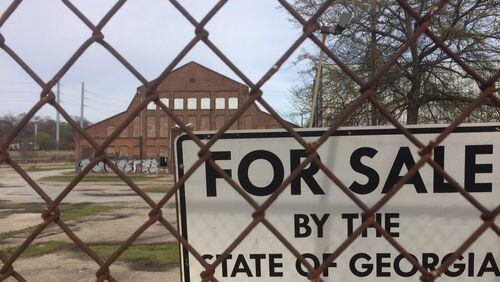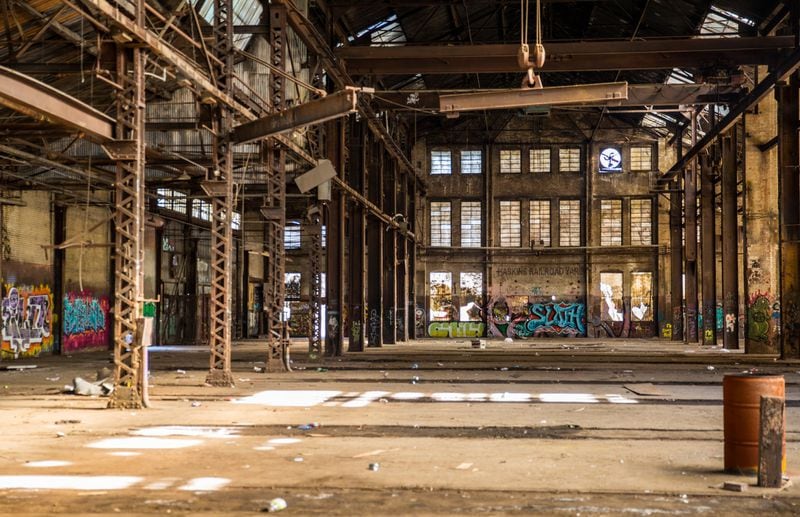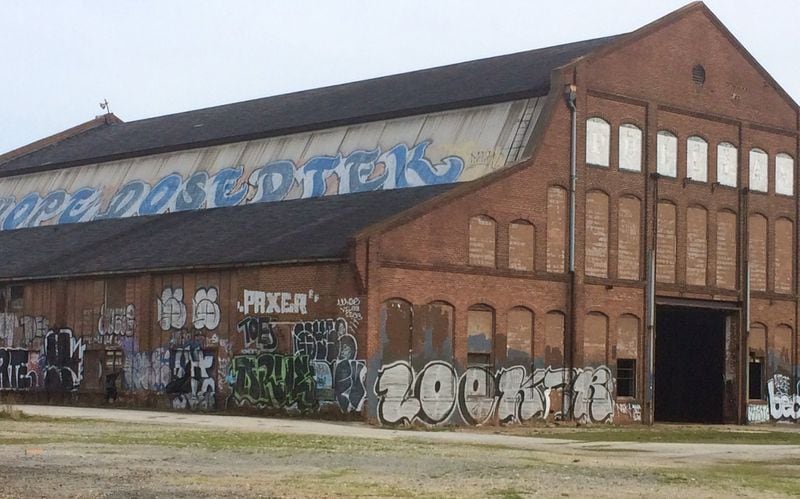Early next month, the state will close bidding on the sale of the Pratt-Pullman train yards in Kirkwood, and the next phase for the historic site will begin.
Now, everybody knows the site is historic — except the state of Georgia, which owns the 27 acres of wooded industrial ruins that have become a backdrop for dystopian movie sets.
State officials have refused to call it "historic" because, well, they aren't talking. But I'm supposing they worry such a designation might drive down the price of the property they're trying to unload. That some developer might be scared off by the thought of having to jump through extra regulatory hoops.
The southeast Atlanta area is now red-hot and the state should get a pretty penny for an undisturbed tract of real estate that sits right in the midst of where young urban professionals want to live.
A decade ago, the state tried to sell the property and even noted its historical cachet: “Because Pullman Yard includes historic structures that are eligible for listing on the Georgia Register of Historic Places and the National Register of Historic Places, the (state) will require the deed of conveyance to contain restrictions on four structures,” the bid document said at the time. “Generally, these restrictions will prevent any demolition, physical or structural change to the exteriors of the structures, thus maintaining the historical significance of the property.”
The state hoped to get perhaps $12 million but ended up receiving just two bids, the highest being $3.7 million.
So this time there was no bothersome mention of historic significance, nor any mention — like there was last time — of protecting the creek on the back of the lot. Yes, there is a 10-acre stand of hardwoods that makes it feel like you are standing in the forest. There is a movement afoot to try to save some or much of that.
The state is going out of its way now to avoid messy entanglements. Last year, the Atlanta City Council voted to give the Pullman site a historical designation. But a state lawyer sent a letter saying a city can’t tell a state what to do, so the city dropped it.
As it stands, the site will go to the highest bidder, whatever the buyer’s intentions. (Minimum bid is $5.6 million.)
Earl Williamson, a Kirkwood neighborhood leader, said, “It’s our understanding that this time they elected not to put any conditions on it. The Georgia Building Authority felt conditions would be a poison pill.
“Given the dramatic increase in real estate values around here,” he added, “they should be getting a serious chunk of change.”
Charles Lawrence, a historic building specialist, noted that the century-old iconic structures tell the history of this old railroad town we call Atlanta.
However, Georgia has been reluctant to listen to the surrounding neighbors’ concerns and their hopes for what should happen on the site — even though residents have been talking about it for years.
“There’s an expectation that there should be some public comment,” Lawrence said. “This is publicly owned property, but for the state to treat it like it’s a private real estate deal is irresponsible.”
I get it. The state wants to maximize the return on the property it has owned since 1992. But we, the people of the state of Georgia, own the property.
Cities, counties and states buy land all the time to take it out of the path of development and save it for parks and nature preserves. That could have been done here. A requirement could have been baked into the state’s bid request package to save several of the historic buildings and some of the forest behind them.
That 10-acre woodland behind the buildings is said to be the largest remaining chunk of forest left in east Atlanta. A consortium of local groups, such as the Pullman Forest Alliance, want to have much of it preserved.
Jerry Miller, who redeveloped Castleberry Hill, a historic area south of downtown, is part of a group putting together a bid on Pullman. He said the “rational approach” would have been for the state to put out a bid package with certain objectives, such as historic designation, a requirement to save forest land, and a buyer’s agreement to adhere to some neighborhood demands.
Then everyone bidding would know the situation before they stepped into it.
“We would certainly save the historic buildings; that’s the allure of the property,” Miller said. “I don’t know anyone who’d raze the buildings. But they might be out there.”
Atlanta Councilwoman Natalyn Archibong doesn’t like how the state is approaching the process this time. “It’s sort of a blank canvas,” she said. “Right now there’s more questions than answers.”
The property is zoned heavy industrial, which means a buyer could build storage units or create a movie studio without worry.
If the plan, however, were to build the sort of live-work-play development that everybody seems to want these days, then the new owner would have to go to the local Neighborhood Planning Unit and then to the city to get a zoning change.
(Although, get this: Lawrence, the historian guy, said developers often are allowed to build on a portion of their property, saying they will fix the historic structures later, only to return to the government and complain the structures are unsalvageable and must be torn down.)
Archibong noted the neighborhood has stated a desire for green space, for retail and residential, and keeping the unique buildings.
“This can be an awesome public-private partnership,” she said. But there are no guarantees. “I hope we don’t get someone with the financial wherewithal who doesn’t see it that way.”
About the Author










